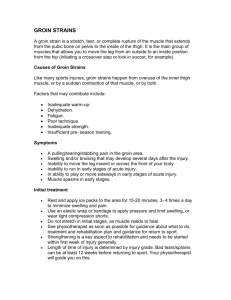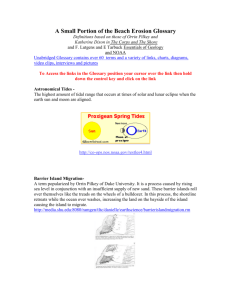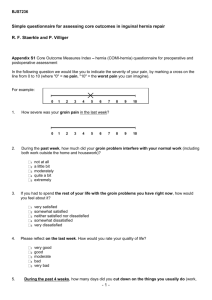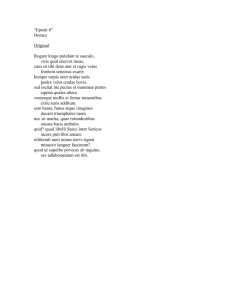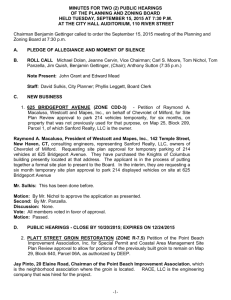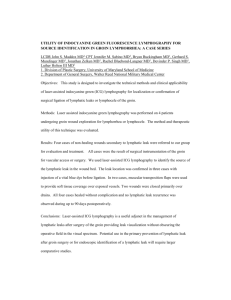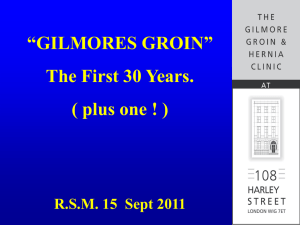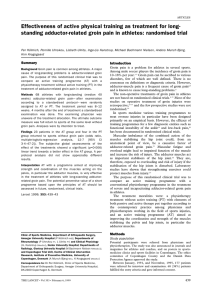groin strain rehabilitation - Dan Turley
advertisement
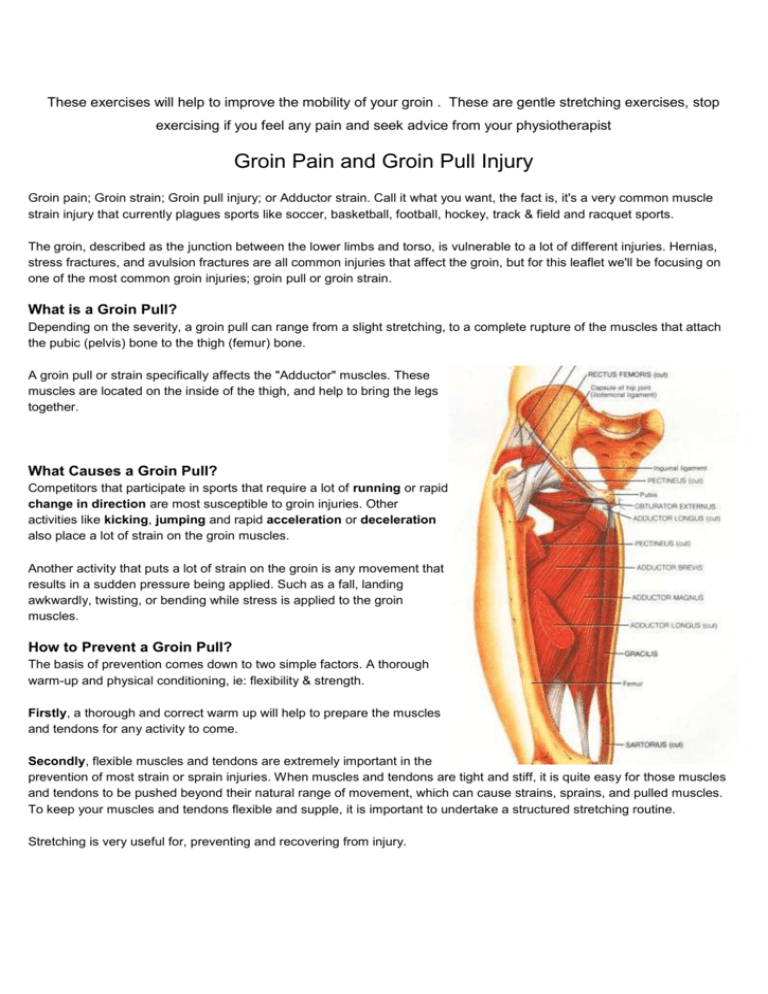
These exercises will help to improve the mobility of your groin . These are gentle stretching exercises, stop exercising if you feel any pain and seek advice from your physiotherapist Groin Pain and Groin Pull Injury Groin pain; Groin strain; Groin pull injury; or Adductor strain. Call it what you want, the fact is, it's a very common muscle strain injury that currently plagues sports like soccer, basketball, football, hockey, track & field and racquet sports. The groin, described as the junction between the lower limbs and torso, is vulnerable to a lot of different injuries. Hernias, stress fractures, and avulsion fractures are all common injuries that affect the groin, but for this leaflet we'll be focusing on one of the most common groin injuries; groin pull or groin strain. What is a Groin Pull? Depending on the severity, a groin pull can range from a slight stretching, to a complete rupture of the muscles that attach the pubic (pelvis) bone to the thigh (femur) bone. A groin pull or strain specifically affects the "Adductor" muscles. These muscles are located on the inside of the thigh, and help to bring the legs together. What Causes a Groin Pull? Competitors that participate in sports that require a lot of running or rapid change in direction are most susceptible to groin injuries. Other activities like kicking, jumping and rapid acceleration or deceleration also place a lot of strain on the groin muscles. Another activity that puts a lot of strain on the groin is any movement that results in a sudden pressure being applied. Such as a fall, landing awkwardly, twisting, or bending while stress is applied to the groin muscles. How to Prevent a Groin Pull? The basis of prevention comes down to two simple factors. A thorough warm-up and physical conditioning, ie: flexibility & strength. Firstly, a thorough and correct warm up will help to prepare the muscles and tendons for any activity to come. Secondly, flexible muscles and tendons are extremely important in the prevention of most strain or sprain injuries. When muscles and tendons are tight and stiff, it is quite easy for those muscles and tendons to be pushed beyond their natural range of movement, which can cause strains, sprains, and pulled muscles. To keep your muscles and tendons flexible and supple, it is important to undertake a structured stretching routine. Stretching is very useful for, preventing and recovering from injury. HOWEVER, CARE SHOULD BE TAKEN WITH THE FOLLOWING STRETCHES TO AVOID MAKING YOUR GROIN INJURY WORSE, NOTHING MORE THAN A STRONG STRETCH SHOULD BE EXPERIENCED WITH THESE AND IF ANY PAIN IS PRESENT YOU MUST EASE OFF UNTIL PAINFREE. And thirdly, strengthening the muscles of the groin will also help to prevent groin strain. There are a number of specific strengthening exercises you can do for these muscles in the gym but make sure you get expert advice . If you do happen to suffer from a groin injury, it's important that correct first aid principles are applied immediately. Rest, as soon as a hamstring injury occurs, rest the injured limb, , Ice, apply ice to the effected area, Compression apply a compression bandage Elevation elevate the limb if possible. This treatment needs to continue for at least 48 to 72 hours. This is the most critical time for the injured area, correct treatment now can mean a better recovery After the first 72 hours obtain a referral from a qualified professional and start a comprehensive rehabilitation program.
